There are many techniques for cleaning your teeth, but few that are acceptable and safe. We always recommend the one that is effective and built on human anatomy and our behavioural habits.
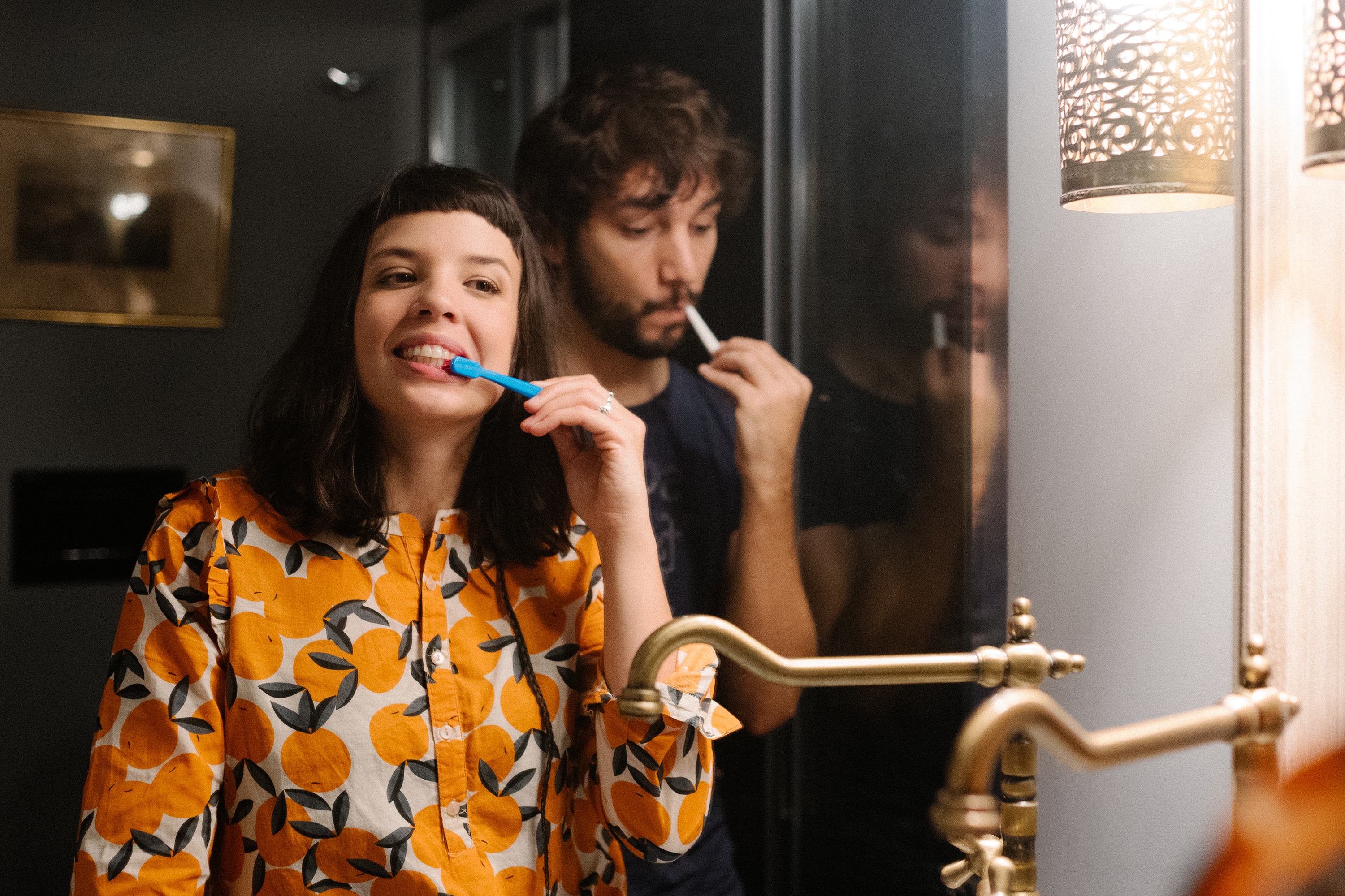
We have shared this way of teaching on our iTOP courses with more than 20,000 dental professionals since we started in 2006. And if you apply this technique too, you can be sure your teeth will be cleaner, bacteria won’t build up and gums will stay healthy.
Rule of thumb: Always start with the most difficult places
Usually people start brushing the front and very often overlook the inside of their teeth, and the back molars. This is why these are the most caries-prone areas.
Get into this habit: start with the most difficult places and end with the easy ones.
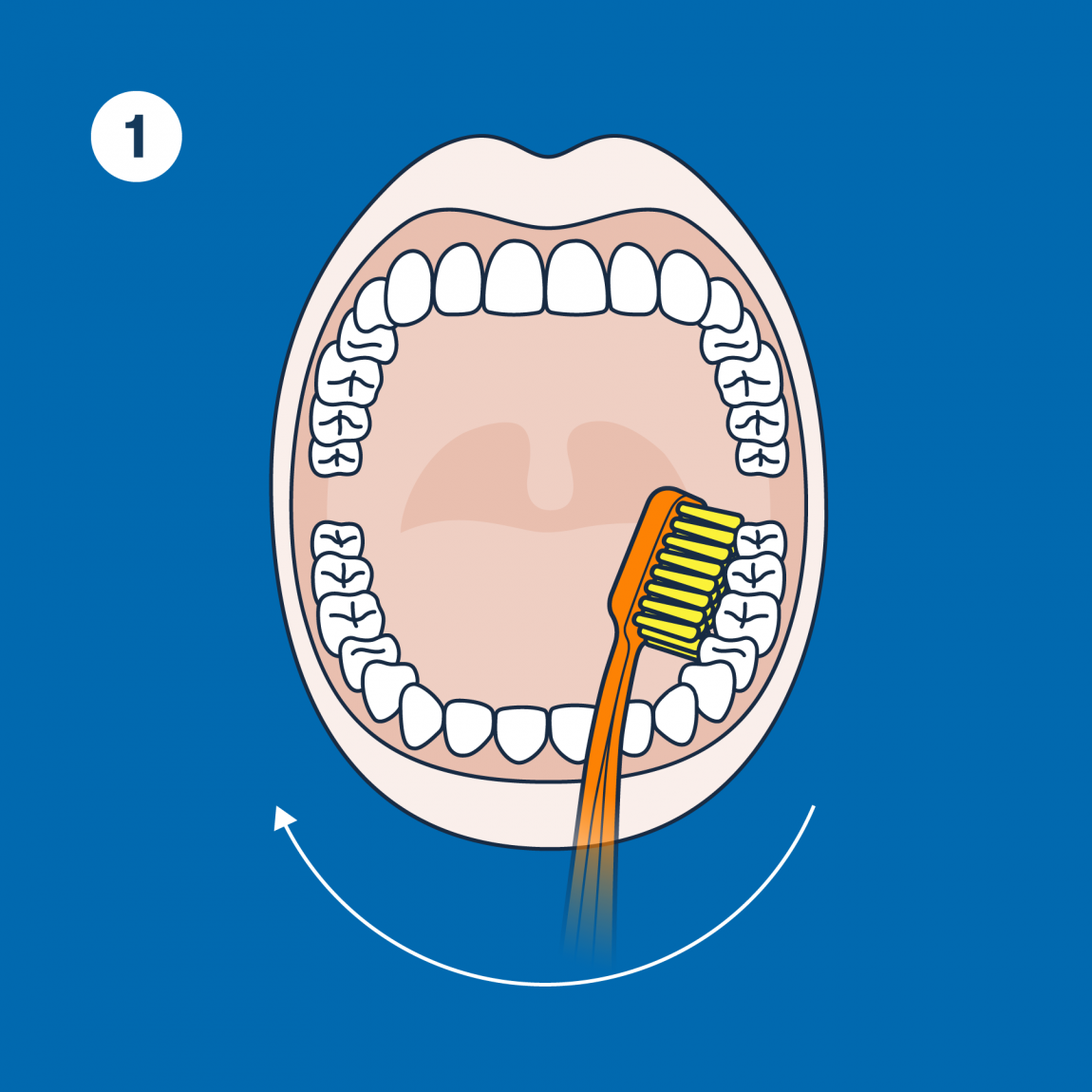
Start all the way at the back of the mouth and move tooth by tooth through the inside of your lower teeth first.
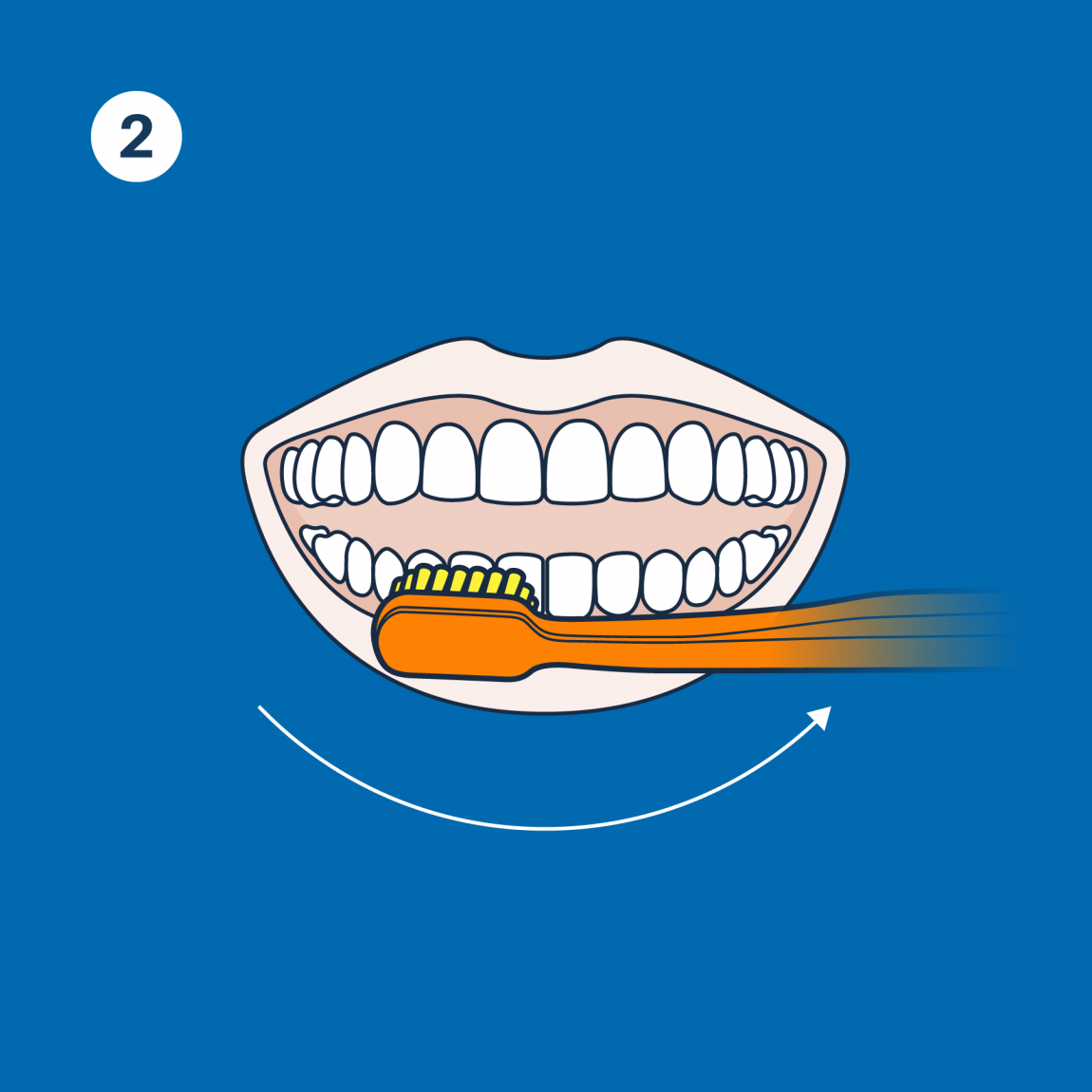
Continue on the outside. If you have a problematic area, or one you tend to forget, start there and move tooth by tooth to the other side.
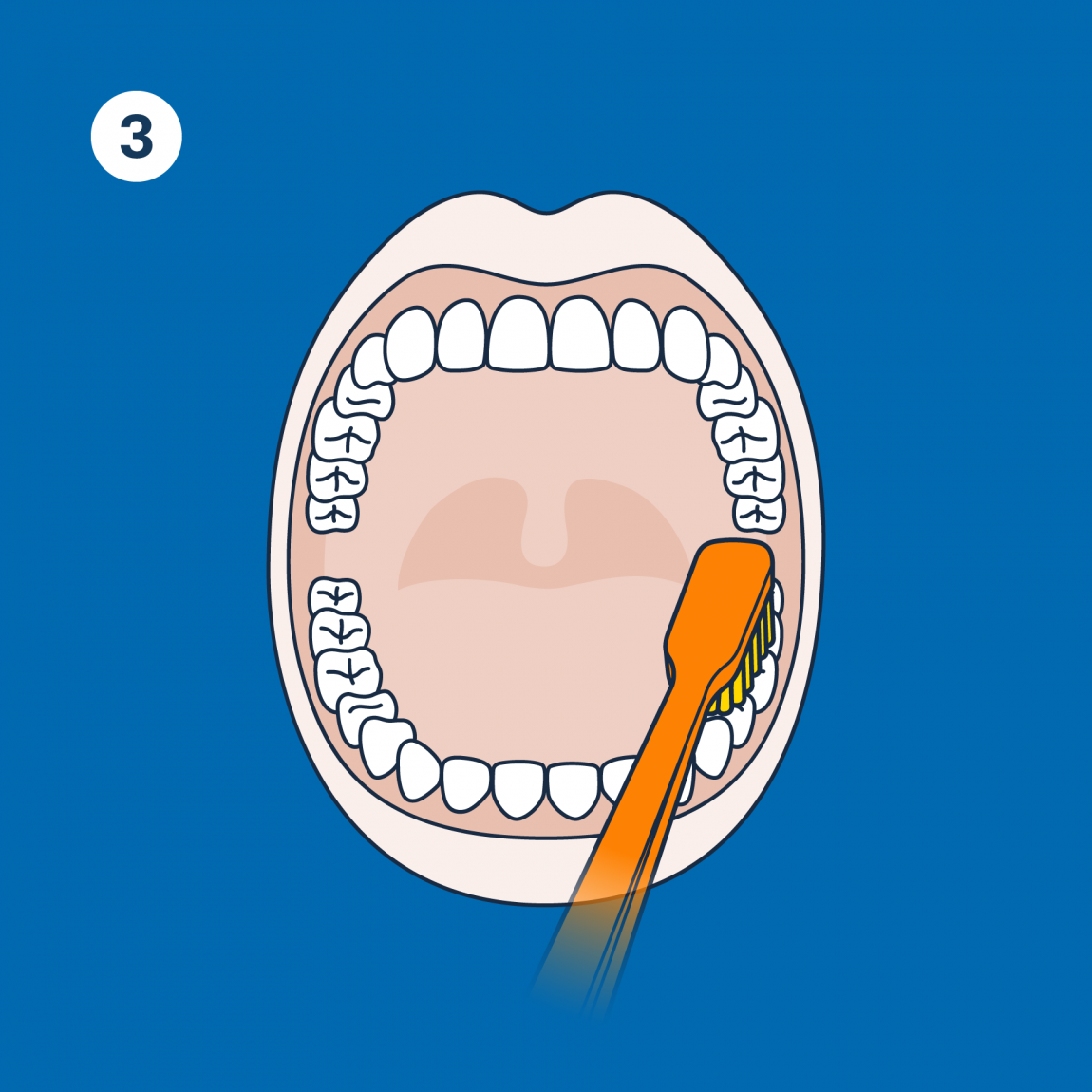
Finish with the chewing surfaces. Make sure you pay proper attention to the back of the rear molars – the chewing teeth.
Follow the same pattern as before with the upper row:

Start at the back of the upper row and brush the inside first.
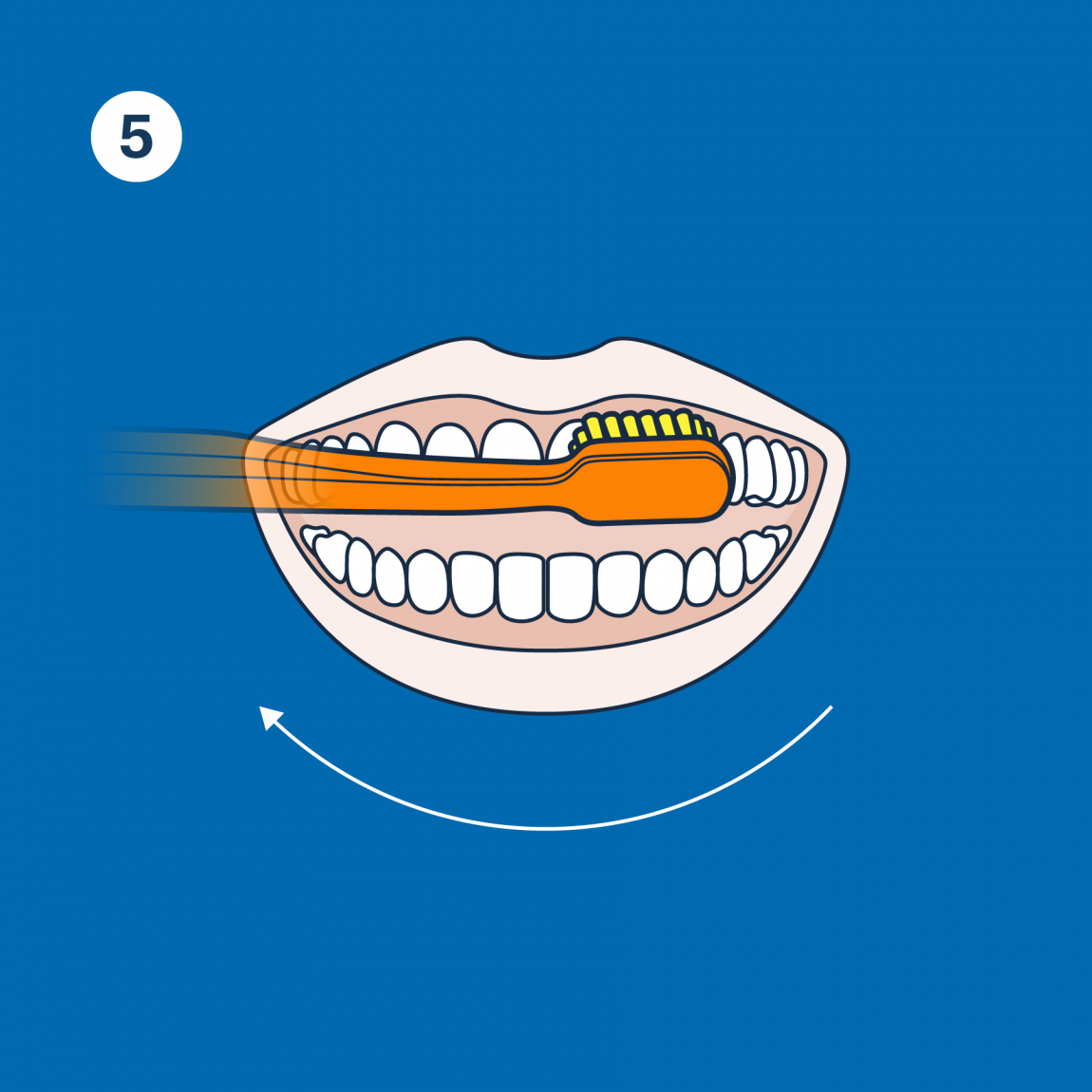
Move to the outside.

Finally, brush the bottom of the chewing surfaces.
Make sure that half of your bristles are always on the gums and the other half on your teeth. For the outside, hold the brush horizontally when brushing. For the inside, just make sure the bristles are in
Hold the brush like a pen while brushing
This might feel unusual but it is effective: hold the brush the way you hold a pen. It makes sure you don’t push too hard on your teeth, and the brush will fit in your hand under the correct 45° angle.
Thanks to the octagonal handle of the CURAPROX toothbrush, this will come naturally – this is what makes our toothbrush so special.
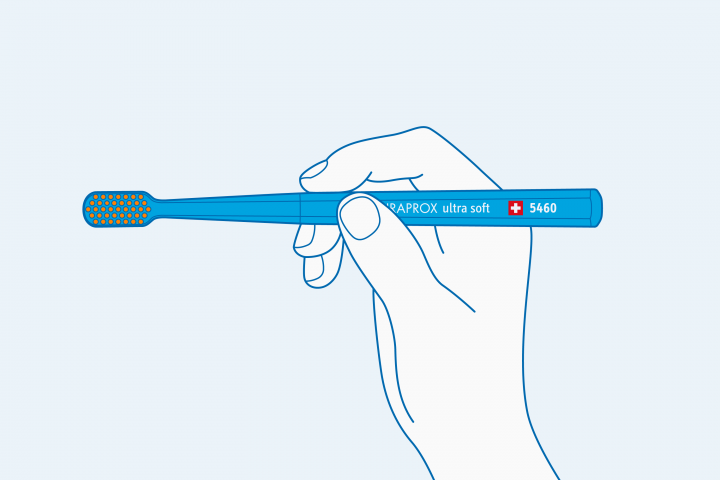
Hold the brush at a 45° angle to clean bacteria from your gumline
Why a 45° angle? Bacteria and plaque usually hide in the gumline – sulcus. To get rid of them more effectively, the brush head should be slightly inclined towards the sulcus.

Place the brush half on your teeth, half on the gums, and move in small circles
As we said before, bacteria nest in the gumline, which is why you should place an ultra-soft toothbrush this way: one half of the brush covers the teeth, and the other half the gums. Applying minimal pressure, move in small circles.
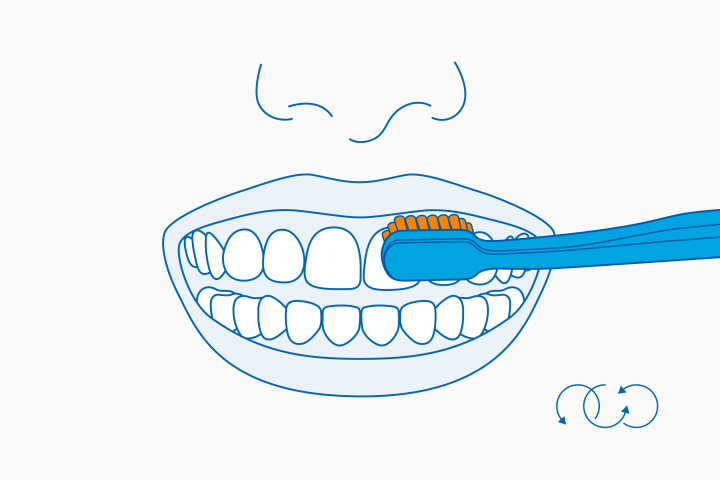
Don’t forget to be precise, otherwise bacteria will build up. When you rush through brushing, you can get into the habit of skipping certain parts of your teeth.
Once you start slacking off on a regular basis, you allow the dental plaque to harden, create cavities, inflame the gums or turn into tartar. The parts that you neglect now have a much higher risk of getting cavities and gum inflammation in the future.
Test yourself: Lick your teeth to see if you’ve done it right
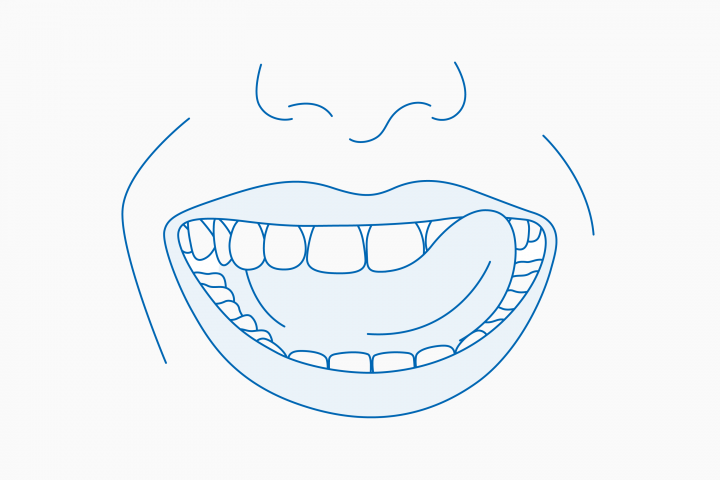
How do you know if your teeth are really clean? It’s simple: lick your teeth. They should be as smooth as glass. If some are still rough, you can use more precise tools like a single brush to clean them.


